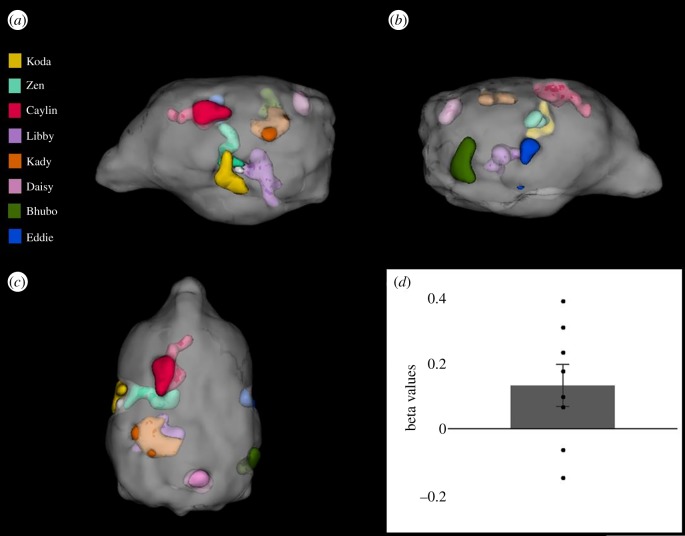Figure 2.
Location of number-sensitive regions for all dogs and effect size in held-out data. For visualization and comparison of location, the regions of interest (ROIs) have been spatially normalized and overlaid on a high-resolution dog brain atlas [33]. Each colour represents the ROI of one dog. (a) Left-sided view. (b) Right-sided view. (c) Dorsal view (nose at top). Of the 11 dogs scanned, three did not exhibit ratio-dependent activation: Pearl, Tallulah and Truffles (8 and 13 years old, respectively). Of the eight dogs that did exhibit ratio-dependent activation, there was no correlation between age and ROI size or beta value (p values > 0.826). (d) Beta values from the number-sensitive ROIs in the held-out data for block ratio as a predictor of activation. Data points represent individual dogs. Error-bar shows s.e.m. (t7 = 2.01, p = 0.042, one-sided).

